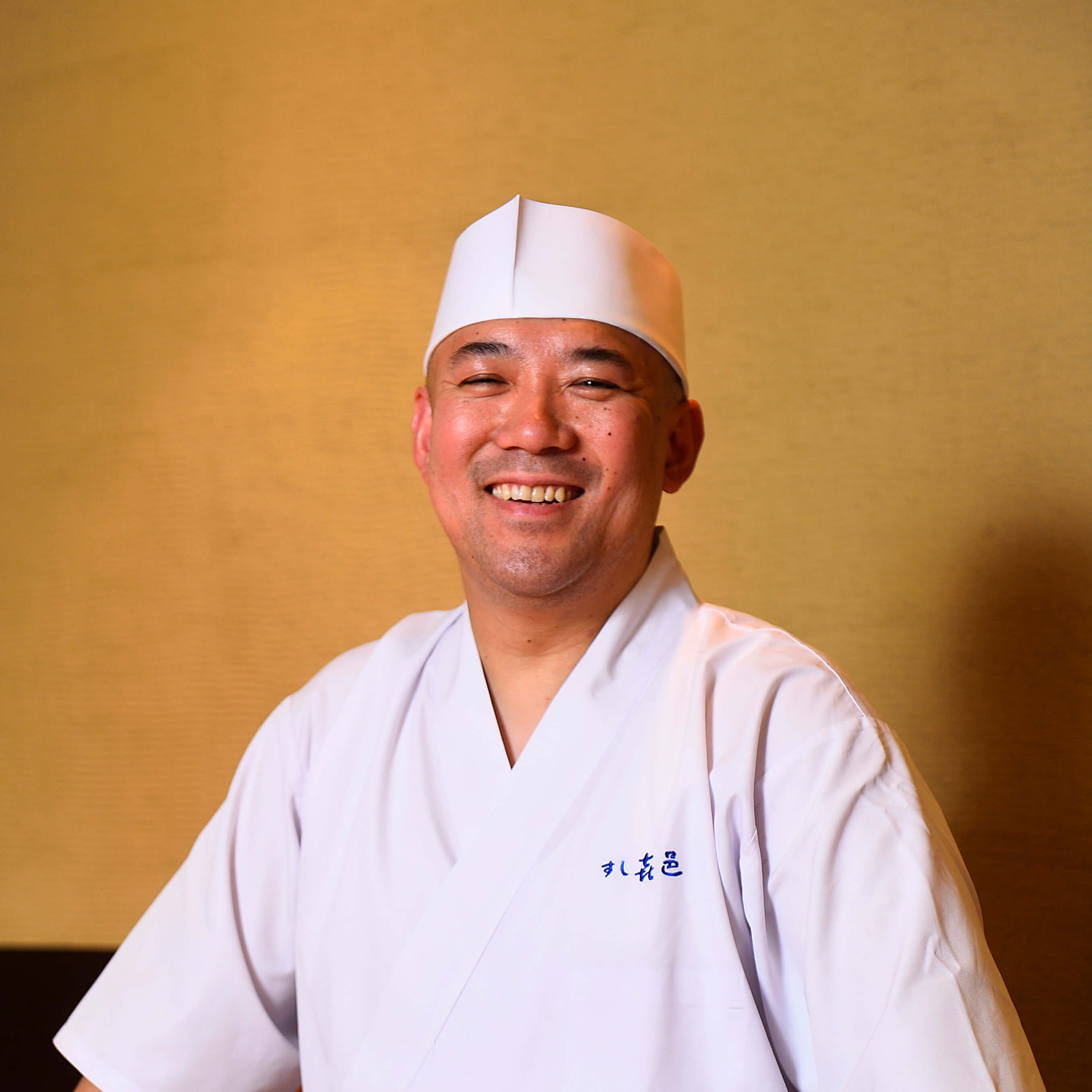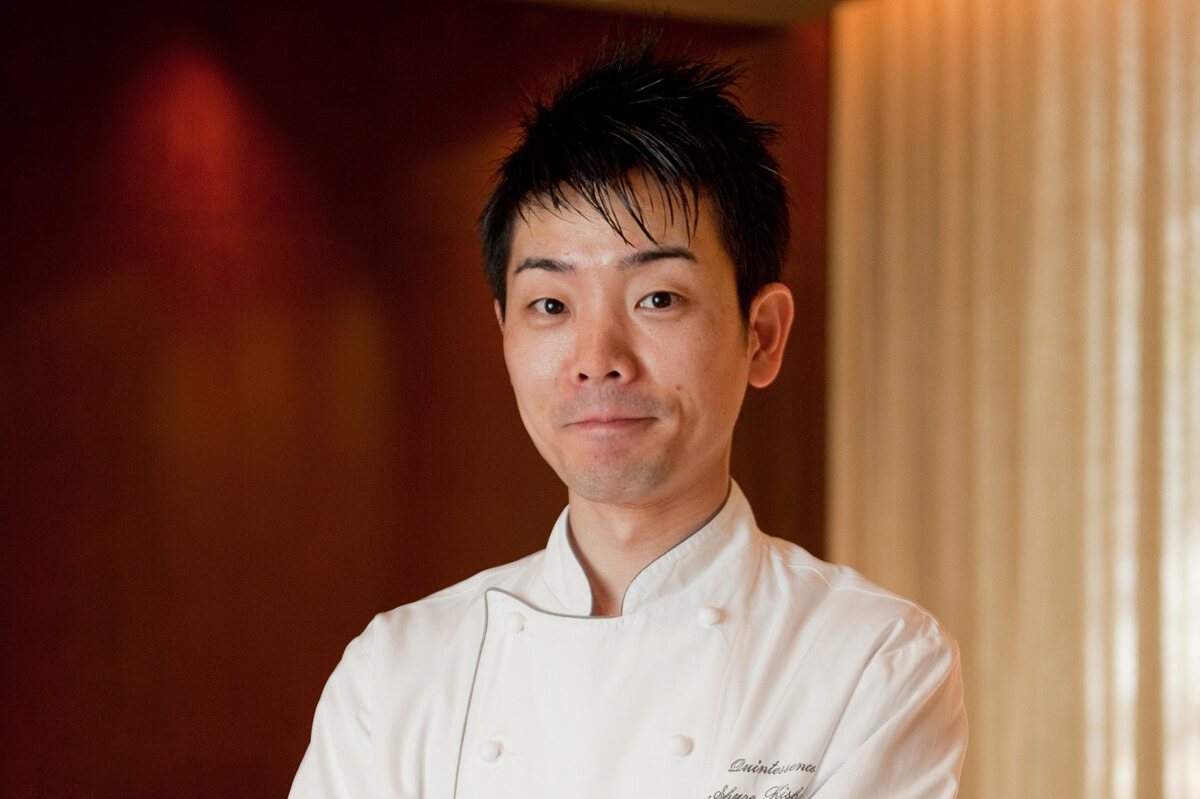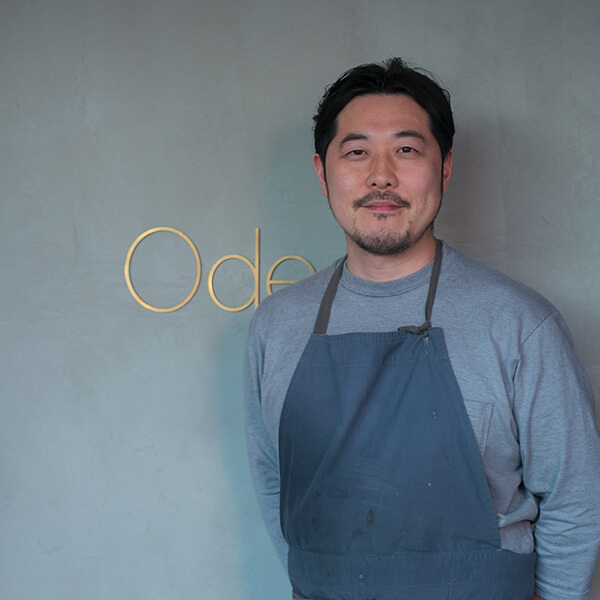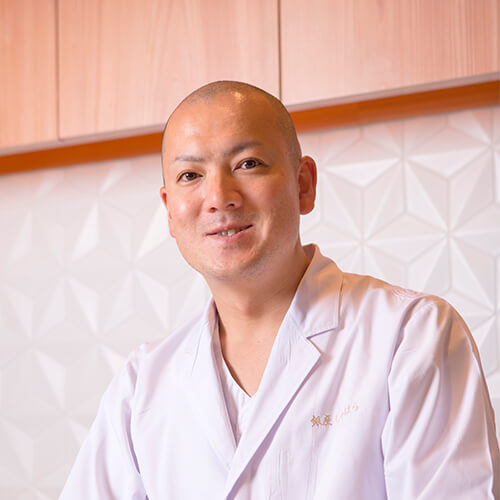Established in 2005, Eager to Attract Sushi-Lovers

––When did you first aspire to become a sushi chef?
Mr. Kimura: Born in a third-generation sushi restaurant family, I recall eating sushi since elementary school, every time I accompanied my father to his sushi restaurant. I loved communicating with regular customers as I observed my father preparing dishes. Sushi restaurant was a special space that I admired greatly. Hence, becoming a sushi chef was a future that I had never questioned. I was 21 years old when I started training at a sushi restaurant owned by my grandfather’s favorite apprentice. After that, I gained experience at a restaurant run by my uncle for 6 years. I was 33 years old when I established a restaurant of my own.
––Why did you choose a suburban location (Futago-Tamagawa) in Tokyo instead of the more populated area?
Mr. Kimura: I wanted to prepare sushi for genuine sushi gourmets. Ginza was not appropriate in this light, as the restaurants are mostly suitable for business gatherings. Residential area secluded from the business world where gourmets gather —that is how I chose this location. In addition, I selected a building distanced from the station, as I wanted to accept only reserved customers.
Finding Ways Through Adversity

––You deliberately chose a location difficult of access. How did you come across the idea of “Aged Sushi”?
Mr. Kimura: Despite the location, I had confidence that my sushi will attract customers. All I wanted was my customers to have a splendid dining experience. However, contrary to my expectation, almost no customers appeared. As no one came, excellent fish commenced decaying. It broke my heart having to dispose them. One time, I figured that I should try rotten Shima-aji (striped jack). Cutting it, I found a portion that I might be able to eat. As a result, there was an unbearable smell, along with the savoriness that I had never experienced before. “What if I remove the stench while preserving its savoriness, thus “aging” it?” That is how my experiment started.

––You experimented with the fish you procured for the customers?
Mr. Kimura: “Aging” and “rotting” are the same process. I spoiled lots of fish for this reason. In reality, my restaurant was so empty that they deteriorated naturally! What if I store it upwards? Which of the body part rots the quickest, and what makes them rot? I experimented as much as I can, anticipating that the “umami of aged fish” will one day become my specialty. Unexpectedly, my experience at a tempura restaurant [Mikasa] before opening the restaurant contributed. One of the reasons for the ingredients to spoil is water. A sushi chef uses water to prepare his dishes whereas the tempura chef avoids moisture, drying his ingredients.
––How did you believe in the possibility of “aged sushi”—the unprecedented style of sushi—even though you had no customers?
Mr. Kimura: During those days, only five out of hundred customers became regular customers, so obviously, I was very anxious. The consequence was only natural, because in between the regular sushi, I served incomplete aged sushi. Despite the defect, the owner of [Mikasa] regularly came and advised me, “If you really feel a possibility in aged sushi, pursue it until you run out of business.” With this word, I put all the hesitation behind me and decided to accomplish my pursuit. While being financially supported by my family, I proceeded my experiment. Finally, after six years, I was able to serve my aged sushi with confidence. Around that time, the trend of dry-aged meat started, and more and more customers started to appear.
Pursuing One-And-Only Dishes at [Sushi Kimura]

––What arrangement did you make with the shari (vinegared rice for sushi)?
Mr. Kimura: Shari is the fundamental of sushi. If this essential part of sushi is inadequate, there is no chance of satisfying the customers. My experiment succeeded because of the encountering with the Kyoto-brewed vinegar produced by Iio Brewery right at the time when I was experimenting with aged ingredients. The characteristic of this particular vinegar is that it is made from chemical-free rice. The manufacturing process goes like this: after generating a junmai-shu (category of sake) out of the rice, the vinegar is created through the fermentation of three years. In fact, scrutinizing the back label, the vinegar is composed only of rice! This savored really well, and created the best balance with the aged ingredients. It took three years to complete shari.

––I heard there are a lot of fans not only for the aged one-and-only sushi, but also for the unique appetizers that can only be eaten here.
Mr. Kimura: As customers need to trek all the way to Futago-Tamagawa, I am determined to cater what can only be eaten at [Sushi Kimura]. While sushi is a core of my profession that I pour my heart into, appetizer is a playground where I use my creativity. I want to make the most out of the ingredients, and concoct truly unique dishes. For instance, [salted Gazami crab] was created out of a mere curiosity of why raw crabs are unused in Japanese cuisine, even though it tantalizes Japanese people so much. If such menus do not exist in Japan, I decided to establish an Asian standard with [salted Gazami crab].

––You seem to pour so much time and effort in your dishes. “No compromise is acceptable upon creating what’s really good.” Is this your philosophy as a professional?
Mr. Kimura: I have been told, “To make effort and energy are for free.” That is exactly true. Doing whatever I want for cooking will not cost me a thing. As time passes, your style alters. In the past, my sushi centered upon long aged sushi. Now, I serve regular sushi as well, along with the aged sushi with broad maturing period. The only thing I can do, is to love the ingredients and pursue its uniqueness, expressing myself completely thorough my dishes. That is truly the only thing I can do.














